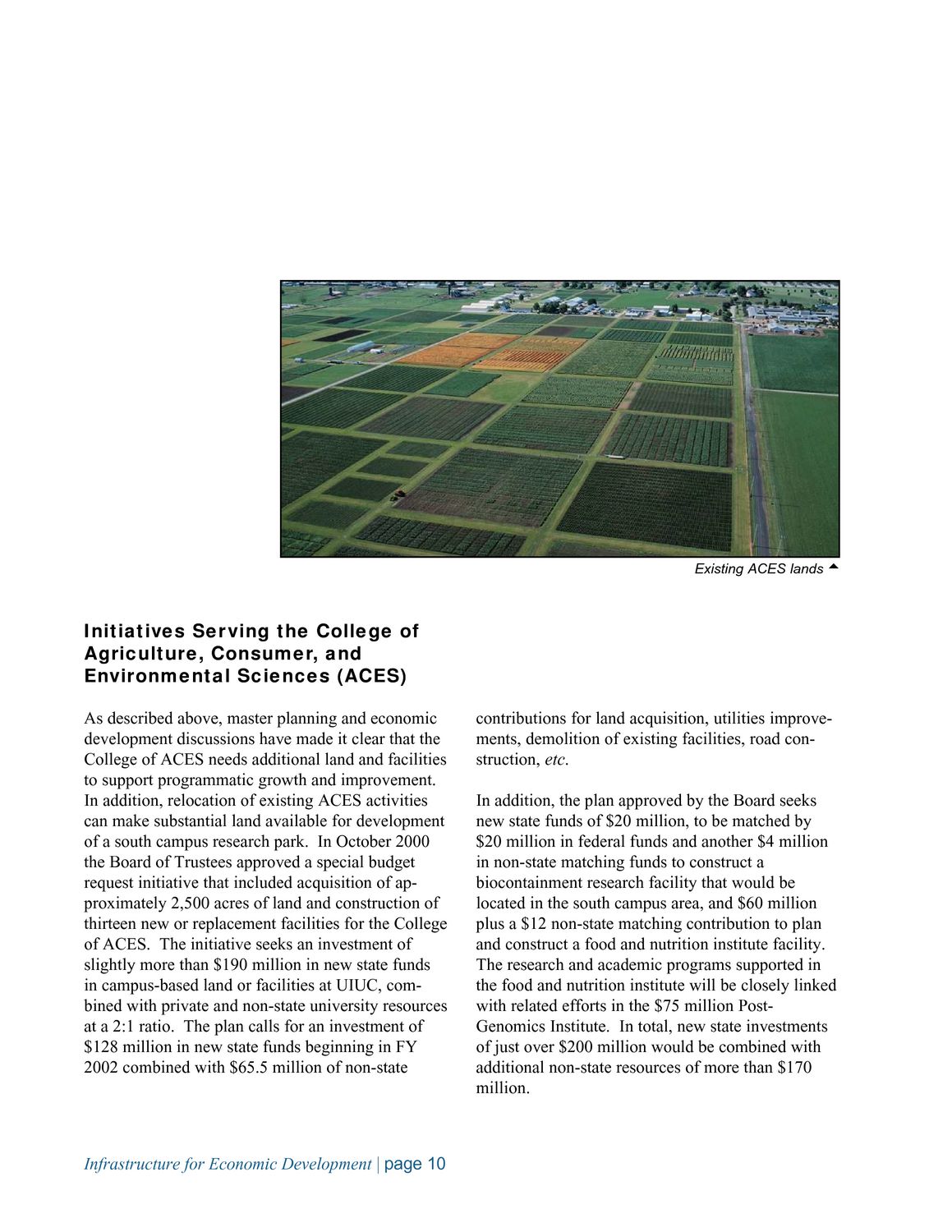| |
| |
Caption: Map of UIUC (2001) (Economic Development)
This is a reduced-resolution page image for fast online browsing.

EXTRACTED TEXT FROM PAGE:
Existing ACES lands = Initiatives Serving the College of Agriculture, Consumer, and Environmental Sciences (ACES) As described above, master planning and economic development discussions have made it clear that the College of ACES needs additional land and facilities to support programmatic growth and improvement. In addition, relocation of existing ACES activities can make substantial land available for development of a south campus research park. In October 2000 the Board of Trustees approved a special budget request initiative that included acquisition of approximately 2,500 acres of land and construction of thirteen new or replacement facilities for the College of ACES. The initiative seeks an investment of slightly more than $190 million in new state funds in campus-based land or facilities at UIUC, combined with private and non-state university resources at a 2:1 ratio. The plan calls for an investment of $128 million in new state funds beginning in FY 2002 combined with $65.5 million of non-state contributions for land acquisition, utilities improvements, demolition of existing facilities, road construction, etc. In addition, the plan approved by the Board seeks new state funds of $20 million, to be matched by $20 million in federal funds and another $4 million in non-state matching funds to construct a biocontainment research facility that would be located in the south campus area, and $60 million plus a $12 non-state matching contribution to plan and construct a food and nutrition institute facility. The research and academic programs supported in the food and nutrition institute will be closely linked with related efforts in the $75 million PostGenomics Institute. In total, new state investments of just over $200 million would be combined with additional non-state resources of more than $170 million. Infrastructure for Economic Development | page 10
| |